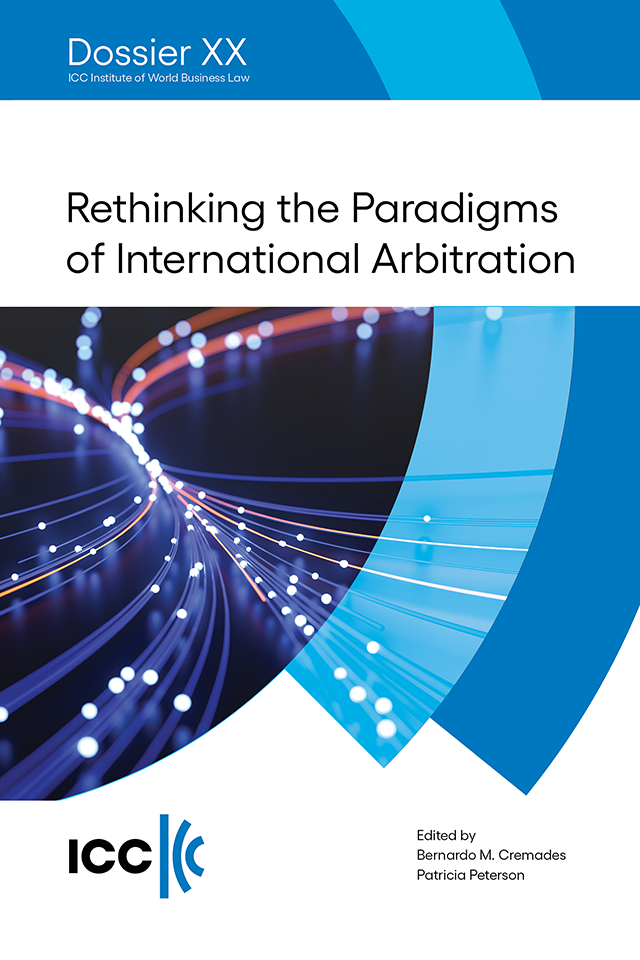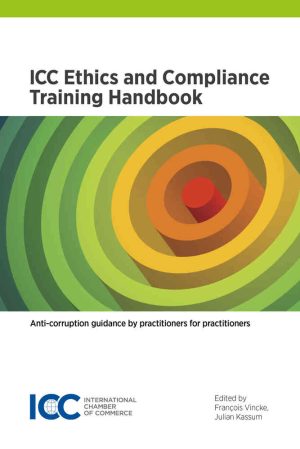Descrizione
Pubblicazione disponibile nel Formato eBook. Per leggere l’eBook è necessario aver installato Adobe Digital Editions (Software gratuito) sul proprio device. Leggi qui come scaricare un eBook ICC.
Il ventesimo Dossier dell’Istituto ICC di World Business Law analizza come la pandemia abbia messo in discussione le convenzioni procedurali nell’arbitrato internazionale e aperto la strada a una riconsiderazione delle tecniche di gestione dei casi ampiamente utilizzate.
Il Dossier dimostra che le principali caratteristiche procedurali dell’arbitrato internazionale possono essere adattate per soddisfare le esigenze specifiche di un caso e, di conseguenza, migliorare l’efficienza dell’arbitrato come meccanismo di risoluzione delle controversie. Esplora i poteri intrinseci dei tribunali arbitrali, compreso il loro ruolo nella promozione dell’uso della tecnologia e nella proposizione di approcci innovativi per strutturare i procedimenti.
Questa edizione del Dossier esamina le sfide attuali legate alla produzione di documenti nelle prove, proponendo un aggiornamento tecnologico al Redfern Schedule e spiegando le implicazioni dell’uso della revisione assistita dalla tecnologia (TAR) per conformarsi agli ordini di produzione dei documenti. Scritto da professionisti internazionali, il Dossier fornisce spunti su come migliorare la preparazione delle prove dei testimoni per aumentare l’affidabilità ed evitare la duplicazione delle osservazioni. Inoltre, propone nuove tecniche per la gestione delle prove degli esperti, progettate per concentrare le relazioni degli esperti di discipline simili su domande e insiemi di dati duplicati o identici, facilitando l’individuazione dei punti di accordo.
Il Dossier comprende anche un capitolo dedicato alle diverse opzioni disponibili per le udienze arbitrali – in presenza, ibride e virtuali – per personalizzare un’udienza efficace in base alle circostanze specifiche del caso e alla sede designata per l’arbitrato.
Invitando i lettori a riconsiderare i paradigmi dell’arbitrato internazionale, il Dossier presenta idee innovative per plasmare il futuro della risoluzione delle controversie e per consentire un miglior accesso alla giustizia per tutti, ovunque.
Chapter 1
Inherent and discretionary powers of arbitrators
Catherine Kessedjian…. 17
I. Introduction…. 17
II. Five transversal issues…. 19
(a) Should/could the tribunal act sua sponte?…. 19
(b) The president’s powers and the internal functioning of the tribunal…. 20
(c) Seeking the parties’ agreement or observations 21
(d) Should the tribunal justify its use of inherent powers?…. 23
(e) Are inherent powers discretionary?…. 23
III. Inherent powers linked to the management of the proceedings and evidence, or inward-looking powers…. 24
(a) Evidence…. 25
(b) Interim measures…. 26
(c) Professional ethical issues or disciplinary powers…. 26
(d) Main case management decisions…. 26
(e) Costs…. 28
IV. Inherent powers linked to the substance of the dispute or outward-looking powers…. 29
(a) Settlement facilitation…. 29
(b) Raising legal issues not raised by the parties…. 30
V. Conclusion…. 32
Chapter 2
Technology and arbitration: revisiting the paradigms of case management
David W. Rivkin…. 36
I. Introduction…. 36
II. The prevailing paradigm…. 37
III. A state of crisis…. 38
III.1. Pre-pandemic challenges to the prevailing paradigm…. 38
III.2. The pandemic as a catalyst for change…. 39
IV. Adoption of new paradigms?…. 41
IV.1. Low-hanging fruit…. 41
IV.2. A more radical proposal…. 42
V. Conclusion…. 48
Annex to Chapter 2: Town Elder arbitration rules (as of 20 January 2022)…. 51
Chapter 3
Refreshing Redfern: the document production schedule
Gonzalo Stampa…. 57
I. Document production in international commercial arbitration…. 57
II. The Redfern schedule: uses and misuses in practice and proposals to improve its efficiency…. 62
III. Document production schedule…. 64
III.1. The general principles associated with the use of the DPS…. 65
III.2. The format of the DPS…. 66
IV. Conclusion…. 68
Annex 1 to Chapter 3: Bibliography (document references used in this chapter)…. 73
Annex 2 to Chapter 3: Procedure for analysis of DPS data…. 75
Annex 3 to Chapter 3: Sample DPS…. 76
Chapter 4
Compliance with document production orders
Kathryn Khamsi…. 87
I. Introduction…. 87
II. Ensuring compliance with document production orders: traditional paradigm…. 87
III. Technology-assisted review (TAR)…. 90
IV. Oversight of TAR…. 91
IV.1. Whether and when to use TAR?…. 92
IV.2. When is the TAR finished?…. 94
V. Conclusion…. 96
Chapter 5
The use and abuse of factual witnesses
Xavier Favre-Bulle and Christopher Newmark…. 100
I. Introduction: setting the scene…. 100
I.1. Using witness evidence: when and for what purpose?…. 100
I.2. Witnesses as supporting evidence: need for underlying factual allegations?…. 101
I.3. Mandatory limitations to collecting witness evidence?…. 102
II. Relevant soft law and studies…. 103
II.1. IBA (Rules of evidence; Guidelines on party representation); Prague Rules; ASA Toolbox; etc…… 103
II.2. Report on the accuracy of fact witness memory in international arbitration of the ICC Task Force maximising the probative value
of witness evidence…. 108
III. Fighting against abuses: when is witness evidence misused?…. 111
IV. How best to prepare, present and use witness evidence?…. 113
IV.1. Role of counsel when interviewing witnesses…. 113
IV.2. Written witness statements or not?…. 116
IV.3. Best practices for drafting witness statements…. 119
IV.4. Witness ‘preparation’ before the hearing…. 122
IV.5. Witness evidence at the hearing…. 124
V. Assessment and conclusions: the need for new rules (mandatory/soft law) and/or reinforced directions by arbitral tribunals?…. 128
V.1. Enhanced procedural directions for streamlining the witness evidentiary process?…. 128
V.2. Are the IBA Rules of evidence, Prague Rules and other soft law instruments sufficient? Is more needed?…. 130
Chapter 6
Witness statements and memorials
Doug Jones and Robert Turnbull…. 133
I. Introduction…. 133
II. What are witness statements?…. 134
III. What is holding back witness statements?…. 134
IV. What should a witness statement do?…. 135
V. How do we improve witness statements?…. 135
VI. What effect have the proposals had?…. 136
VII. Conclusion…. 137
Annex to Chapter 6: Draft procedural order dealing with Witnesses…. 139
Chapter 7
Redefining the role and value of expert evidence
Doug Jones…. 142
I. Introduction…. 142
II. Who are the expert witnesses?…. 142
III. Methods of appointment…. 144
III.1.The meeting of traditions in international arbitration rules…. 144
IV. Comparative analysis…. 148
IV.1. Tribunal appointed experts…. 148
IV.2. Party appointed experts…. 155
V. Proposed solutions…. 161
V.1. Party appointed experts case management protocol…. 162
V.2. Post-hearing expert access protocol…. 165
VI. Conclusion…. 167
Annex 1 to Chapter 7: Example expert witness procedural order…. 172
Annex 2: Example expert access protocol (quantum experts)…. 174
Chapter 8
Reflections on “effective” evidentiary hearings and the staying power of virtual hearings
Stephanie Cohen and Jason Chan…. 176
I. Introduction…. 176
II. Virtual hearings: fit for crisis…. 177
III. Effectiveness for enforceability beyond crisis…. 178
IV. Shifting procedural norms…. 179
V. Traditional preferences for in-person hearings…. 181
VI. Effectiveness limited by technological competence…. 181
VII. Effectiveness in eliciting truthful testimony…. 182
VIII. Effectiveness for assessing demeanour and credibility…. 183
IX. Effectiveness of advocacy…. 185
X. Technological equality of arms…. 186
XI. Time zones…. 187
XII. Client engagement and settlement…. 188
XIII. Team communications and tribunal deliberations…. 188
XIV. Efficiency of time and costs…. 188
XV. Environmental impact…. 188
XVI. Conclusion…. 189
Chapter 9
Implementation of remote hearings: challenges and prospects from an African perspective
Mouhamed Kebe…. 195
I. Introduction…. 195
II. Countries with pre-existing infrastructure for online hearings…. 195
III. Countries slow to implement virtual hearings…. 196
IV. A closer look at africa…. 197
V. Arbitration in the virtual world: greater room for flexibility and more benefits…. 198
VI. Adjustment to virtual arbitration in the context of africa…. 199
VI.1. West and Central Africa, including the OHADA zone…. 199
VI.2. East Africa…. 200
VI.3. North Africa…. 201
VI.4. Southern Africa…. 201
VI.5. Challenges particular to virtual hearings—technology, witnesses, and other challenges…. 202
VII. Conclusion…. 208
Concluding remarks
Patricia Peterson…. 213
I. A look to the past…. 213
II. A look at the present…. 215
III. The contributions in this dossier…. 215
IV. A look to the future…. 220
Biographies…. 224
Tableofcases…. 229
ICC dispute resolution publications…. 232
About ICC…. 238
Edited by
Bernardo M. Cremades
Patricia Peterson
bAuthors (as they appear in the publication)
Catherine Kessedjian
David W. Rivkin
Gonzalo Stampa
Kathryn Khamsi
Xavier Favre-Bulle
Christopher Newmark
Doug Jones
Robert Turnbull
Stephanie Cohen
Jason Chan
Mouhamed Kebe
Patricia Peterson









